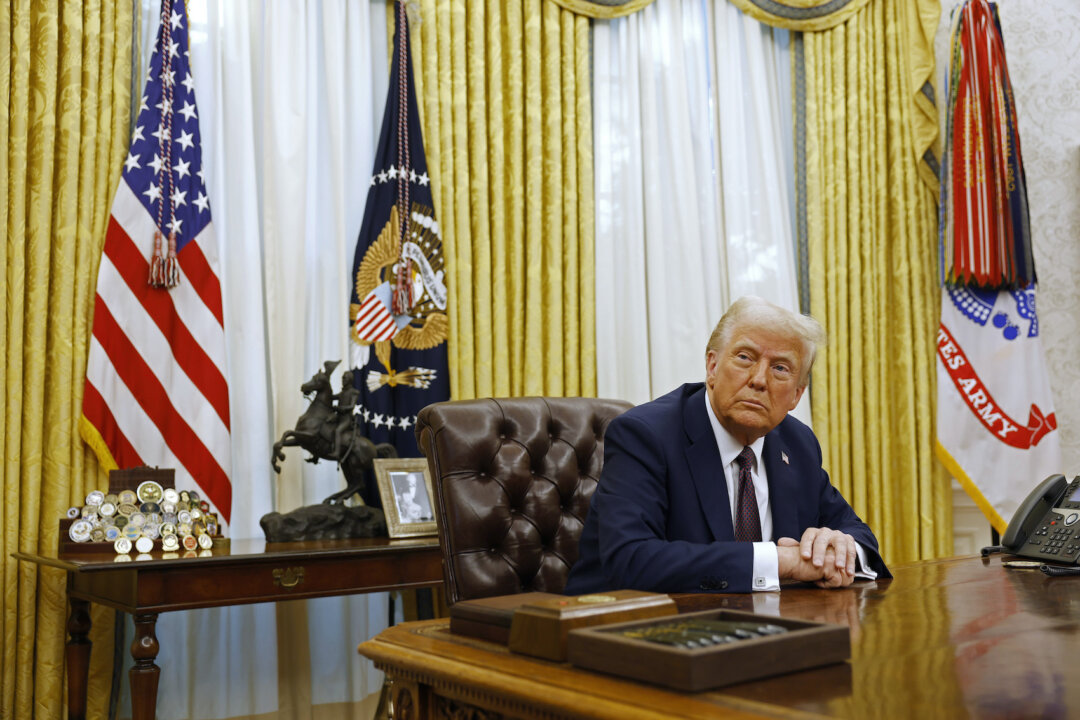The Jan. 22 broadcast completes a two-part conversation with Sean Hannity.
WASHINGTON—In the second half of his first Oval Office interview, President Donald J. Trump outlined more of his agenda at the beginning of his second term.
The Jan. 23 broadcast finished an interview with Fox News host Sean Hannity. The first half, which aired the previous day, touched on everything from pardons for Jan. 6 defendants to TikTok and California’s recent fires. It also covered the declassification of records related to the assassinations of President John F. Kennedy, Robert F. Kennedy, and Martin Luther King, Jr.
The second half of that conversation touched on familiar themes for close observers of Trump. America’s energy reserves, its foreign policy, and its southern border all came up, along with the president’s favorite tool to gain economic and geopolitical leverage: tariffs.
Trump credited tariffs with building up the United States during the 1890s when William McKinley was president.
“He made the country very rich,” the president said of McKinley.
Hannity asked about how the United States’ hydrocarbon resources relate to its economy. The president pointed out that America can tap into more oil and gas than a top rival.
“China doesn’t have that,” he said. “They have to go out the old-fashioned way and buy it.”
The hydraulic fracturing boom of the 2010s transformed the United States, long dependent on energy from Saudi Arabia and other nations, into a net exporter of energy. Through his actions so far, including a day one executive order billed as “unleashing America’s energy,” the president aims to expand on that foundation by opening up more drilling on federal lands and waters and reforming agency rules seen as inhibiting the energy sector.
“We’re going to become a wealthy country again, and energy’s going to lead the way,” Trump told Hannity.
He said wind and solar power would take a backseat during his presidency.
“We don’t want windmills,” he said.Trump said he could cut a deal with China through the use, or threat, of tariffs.
“They don’t want them, and I’d rather not have to use them, but it’s a tremendous power over China,” Trump said.
The president also threatened tariffs on Russia if it does not reach a settlement with Ukraine soon, suggesting the death toll in the conflict could exceed current estimates.
The president told Hannity that Russia stole U.S. hypersonic missile plans during the Obama administration, adding that the United States is now at work on what he called “super-hypersonic missiles.”
Trump also discussed a recent call with China’s leader Xi Jinping, characterizing him as “a very ambitious man” and reiterating that the two had maintained a strong relationship until the COVID-19 pandemic.
He used similar terms to describe Russian leader Vladimir Putin, though he declined to confirm whether or not the two had spoken since he took office.
Trump drew a distinction between China and Russia, two huge counterweights to the United States in an increasingly multipolar world, and Iran, at odds with both the United States and Israel.
“Iran is a different story,” Trump said. “That’s a religious deal that is very dangerous.”
The latest tensions with Iran follow decades of U.S. wars and proxy conflicts with Iraq, Syria, Afghanistan, and other Middle Eastern countries and non-state actors, including Yemen’s Houthi rebels, which Trump moved to designate a foreign terrorist organization through a Jan. 22 executive order.
Hannity probed the president on Iran, asking if he intended to strike its oil refineries.
“I would never say,” Trump replied before emphasizing that the country cannot be allowed to develop a nuclear weapon.

